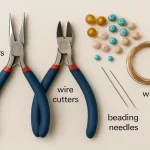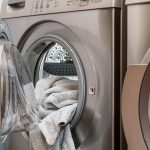Fleas can be more than just a nuisance; these tiny pests can wreak havoc in your home, affecting your pets and the comfort of your living space. Understanding how to combat these invaders effectively is crucial for maintaining a healthy home environment. Whether you prefer to tackle the issue with professional help or take the DIY route, numerous strategies and solutions are available. This article explores both avenues to help you eliminate fleas effectively.
The Role of Professional Services
Professional pest control services can be incredibly effective in managing flea infestations. These companies typically employ proven flea control solutions, which consist of solid insecticides targeting all flea life cycle stages. They design treatment plans that encompass the visible areas of infestation and hidden spots where larvae and eggs might reside. By engaging experts, you ensure that the problem is addressed comprehensively. Additionally, pest control professionals conduct thorough surveys to identify problem areas and points of flea entry, tailoring their solutions to your specific situation. Their expertise often includes guidance on preventive measures to reduce re-infestation risk. The investment in professional service may provide peace of mind, as they manage the treatment of your home with both efficacy and safety in mind.
DIY Solutions for Flea Control
For those willing to embrace the DIY route, there are several effective methods for flea eradication. Basic preventive measures include cleaning your living areas and regularly vacuuming carpets and upholstery. This removes adult fleas and targets eggs and larvae lying in wait. Immediately disposing of vacuum bags or emptying canister vacuums outdoors can prevent re-infestation. Washing pet bedding and your linens in hot water is another helpful step, as this can kill fleas at all lifecycle stages.
Additionally, employing diatomaceous earth— a natural, non-toxic substance—can deter and kill fleas when sprinkled in affected areas. Be sure to allow it time to settle before vacuuming it up, giving it a chance to do its work effectively. Other home remedies include mixtures of vinegar, water, or essential oils, which can deter fleas and reduce their presence. However, approaches may vary in effectiveness, so monitoring results closely will be necessary to assess whether these methods work in your specific situation.
The Importance of Pet Care
Your pets often serve as hosts for fleas, making their treatment critical to combating infestations. Regular grooming and preventive flea treatments can help protect your pets from becoming infested. Consult with your veterinarian to determine the best options for your pet’s health and lifestyle, as numerous topical and oral treatments are available. Bathing your pets with flea shampoos specifically designed to kill fleas can also alleviate the problem. Combined with frequent combing, this method can disrupt the flea lifecycle.
Also, creating a designated area for your pets will help limit flea spread to other home areas. Regularly washing pet toys, bedding, and spaces they frequent is another way to keep fleas at bay. Stay vigilant about noticing flea activity on your pets. If you detect fleas, prompt action is vital to preventing an infestation from spreading to your home environment.
Environmental Control Measures
Flea control is not solely about treating pets; it also encompasses managing the environment. It is essential to focus on areas where fleas will likely thrive, particularly in shaded and humid spots. If neglected, lawns, gardens, and patios can be hotbeds for flea breeding. Maintaining a clean outdoor space reduces potential hiding or breeding spots. Regularly mowing the lawn and trimming overgrown shrubbery can significantly diminish flea habitats.
Consider using outdoor flea treatments or treatments like nematodes, which naturally control flea populations. These beneficial organisms can help keep your yard free from fleas and create a safer environment for your pets. Implementing measures such as adding gravel to pathways and removing debris can enhance outdoor areas while reducing areas where fleas may survive. Staying aware of your outdoor environment will contribute to a more comprehensive approach to flea management.
After treatment, continual monitoring is crucial to avoid re-infestation. Regularly inspect pets for signs of fleas, such as itching, biting, or irritation. Additionally, watch for flea droppings, appearing as tiny black specks on pet fur or surfaces they frequently inhabit. Using flea traps can also provide valuable insights into flea activity, preventing a potential resurgence in numbers. If you notice any upsurge in flea activity, don’t hesitate to reapply for flea treatments—both for your pets and within your home. Investing time in diligent monitoring will help ensure a long-term, flea-free environment in your home. Understanding that flea control is an ongoing responsibility will best prepare you for the challenges of dealing with these pests.
Eliminating fleas from your home requires a multi-faceted approach, encompassing professional help and DIY solutions. By understanding the flea life cycle, employing effective methods, and maintaining vigilance, you set the foundation for a flea-free environment. Effective pet care and environmental control are equally crucial in tackling infestations. Taking proactive measures will ultimately lead to lasting comfort and peace at home.







